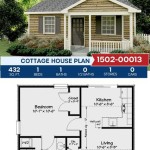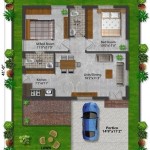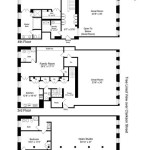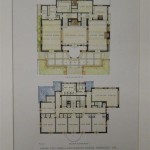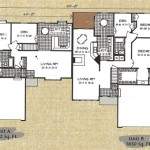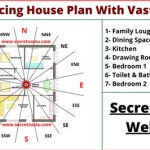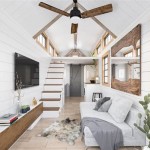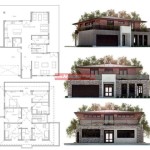Understanding Mission Style Homes and Their Floor Plans
Mission-style homes, a distinct architectural style originating in the late 19th and early 20th centuries, draw inspiration from the Spanish missions built by Franciscan missionaries in California. Characterized by simplicity, functionality, and a connection to nature, Mission-style architecture emphasizes clean lines, sturdy construction, and a cohesive design that permeates both the exterior and interior spaces. Understanding the defining features of Mission-style homes is crucial for appreciating the nuances of their floor plans and how they contribute to the overall aesthetic and livability of the dwelling.
The architectural elements commonly found in Mission-style homes include thick stucco walls, low-pitched red tile roofs, wide overhanging eaves, arched doorways and windows, and prominent use of wood, particularly in exposed beams and decorative details. These features not only provide structural integrity but also contribute to the visual appeal and historical context of the style. The interior spaces often reflect the same principles of simplicity and functionality, with open floor plans, minimal ornamentation, and an emphasis on natural light and ventilation. Fireplaces, often clad in tile or stone, serve as focal points within the living areas, providing warmth and a sense of gathering.
The floor plans of Mission-style homes tend to prioritize functionality and flow, often incorporating open living spaces that connect seamlessly with outdoor areas. The use of courtyards and patios is a common feature, extending the living space and providing opportunities for relaxation and entertainment. The layout typically emphasizes a central living area, around which other rooms are arranged, promoting a sense of connectivity and interaction within the home. The size and configuration of the floor plan can vary depending on the specific design and the needs of the occupants, but the underlying principles of simplicity, functionality, and connection to nature remain consistent.
Key Features Influencing Mission Style Home Floor Plans
Several key features significantly influence the design and layout of Mission-style home floor plans. These features reflect the historical context, architectural principles, and functional requirements of the style. A thorough understanding of these elements is essential for interpreting and appreciating the unique characteristics of Mission-style home floor plans.
The incorporation of courtyards and patios is a defining characteristic of Mission-style homes and plays a crucial role in shaping the floor plan. These outdoor spaces are often integrated seamlessly with the interior living areas, blurring the boundaries between indoors and outdoors. Courtyards provide a private and sheltered space for relaxation, dining, and entertaining, while patios offer a more open and accessible extension of the living space. The strategic placement of courtyards and patios can also enhance natural light and ventilation within the home, creating a more comfortable and sustainable living environment. The floor plan is often designed to maximize access to these outdoor spaces, with large windows, French doors, and open archways connecting the interior rooms to the courtyards and patios. This integration of indoor and outdoor spaces is a hallmark of Mission-style architecture and contributes to the overall sense of harmony and connection to nature.
The emphasis on open living spaces is another key feature that influences Mission-style home floor plans. The traditional layout often features a large, central living area that serves as the heart of the home, around which other rooms are arranged. This open floor plan promotes a sense of connectivity and flow, allowing for easy interaction between family members and guests. The living area typically incorporates a fireplace as a focal point, providing warmth and a gathering place. The kitchen is often integrated into the living area, creating a combined space for cooking, dining, and socializing. The absence of formal divisions between rooms enhances the sense of spaciousness and allows for flexible use of the living space. This emphasis on open living spaces reflects the functional and social values of the Mission-style era, where family and community were central to daily life. The floor plan is designed to facilitate interaction and create a sense of togetherness, making it ideal for modern families who value open communication and shared activities.
The strategic use of arches is also a defining feature that impacts the layout and aesthetics of Mission-style homes. Arches are commonly incorporated into doorways, windows, and passageways, adding a touch of elegance and visual interest to the interior spaces. The rounded shape of the arches softens the angular lines of the walls and ceilings, creating a more harmonious and inviting atmosphere. Arches can also be used to define different zones within an open floor plan, creating a subtle separation between living areas without sacrificing the sense of connectivity. The use of arches is inspired by the architectural traditions of the Spanish missions and reflects the historical and cultural influences of the style. The floor plan is often designed to showcase the arches, with attention given to their placement and proportion. The arches are not only decorative elements but also structural features that contribute to the overall stability and integrity of the building. The strategic use of arches throughout the floor plan is a hallmark of Mission-style architecture and contributes to its distinctive character.
Common Room Arrangements in Mission Style Homes
The arrangement of rooms within a Mission-style home floor plan often follows a consistent pattern, reflecting the style's emphasis on functionality, flow, and connection to the outdoors. While variations exist depending on the size and design of the home, certain common configurations are frequently observed.
A typical Mission-style home floor plan often features a central living area that serves as the focal point of the dwelling. This space typically encompasses the living room, dining area, and often the kitchen, creating an open and interconnected space for family activities and entertaining. The living area is typically characterized by high ceilings, exposed beams, and a prominent fireplace, which serves as a visual anchor. Large windows and doors, often leading to a courtyard or patio, provide abundant natural light and ventilation. The arrangement of furniture within the living area is typically simple and functional, with an emphasis on comfortable seating and ample space for circulation. The dining area is often located adjacent to the kitchen, allowing for easy serving and clean-up. The kitchen may be integrated into the living area, creating a more informal and social space, or it may be partially separated by a counter or island, providing some visual distinction. The central living area is designed to be a versatile and inviting space that serves as the heart of the home, fostering a sense of togetherness and connection among family members and guests.
Bedrooms in Mission-style homes are typically located away from the main living area, providing a sense of privacy and quiet. The master bedroom is often situated at the rear of the house, with access to a private patio or courtyard. The bedrooms are typically simple and functional, with minimal ornamentation and an emphasis on natural light and ventilation. Large windows and doors provide views of the surrounding landscape, creating a peaceful and relaxing atmosphere. The arrangement of furniture within the bedrooms is typically straightforward, with a focus on comfortable beds, ample storage space, and a designated area for dressing. The bathrooms are often located adjacent to the bedrooms, providing convenient access. The size and configuration of the bedrooms can vary depending on the size of the home and the needs of the occupants, but the underlying principles of simplicity, functionality, and privacy remain consistent. The bedrooms are designed to be comfortable and restful spaces that promote relaxation and rejuvenation.
Service areas, such as the kitchen, laundry room, and storage spaces, are typically located on the periphery of the main living area, providing convenient access without intruding on the primary living spaces. The kitchen is often arranged in a U-shape or L-shape configuration, with ample counter space, storage cabinets, and modern appliances. The laundry room is typically located near the kitchen or bedrooms, providing a convenient space for washing and drying clothes. Storage spaces, such as closets and pantries, are strategically located throughout the home, providing ample space for storing household items. The service areas are designed to be functional and efficient, with an emphasis on practicality and convenience. The layout of the service areas can vary depending on the size and design of the home, but the underlying principles of efficiency and accessibility remain consistent. The service areas are an essential part of the overall floor plan, contributing to the smooth functioning of the home and enhancing the convenience of daily living.
Adapting Mission Style Floor Plans for Modern Living
While Mission-style homes offer a timeless appeal, adapting their floor plans to meet the demands of modern living requires careful consideration. Modern families often have different needs and preferences than those who originally inhabited these homes, necessitating modifications to the layout and functionality of the spaces.
One of the primary considerations in adapting Mission-style floor plans for modern living is the integration of technology. Modern homes require ample electrical outlets, data ports, and wireless internet access to support the use of computers, televisions, and other electronic devices. The floor plan should be designed to accommodate these needs, with strategic placement of outlets and ports to minimize clutter and maximize convenience. In addition, modern homes often incorporate smart home technology, such as automated lighting, temperature control, and security systems. The floor plan should be designed to accommodate these technologies, with hidden wiring and centralized control panels. The integration of technology should be seamless and unobtrusive, maintaining the aesthetic integrity of the Mission-style architecture while providing the modern conveniences that homeowners expect.
Another important consideration is the incorporation of modern appliances and fixtures. Modern kitchens and bathrooms often feature high-end appliances, such as stainless steel refrigerators, dishwashers, and ovens, as well as luxurious fixtures, such as granite countertops, tile backsplashes, and custom cabinetry. The floor plan should be designed to accommodate these appliances and fixtures, with ample space for installation and operation. In addition, modern bathrooms often feature walk-in showers, soaking tubs, and double vanities, requiring careful planning of the floor space. The incorporation of modern appliances and fixtures should be done in a way that complements the Mission-style architecture, preserving the historical character of the home while providing the modern amenities that homeowners desire. The selection of materials and finishes should be carefully considered to ensure that they are in harmony with the overall design aesthetic.
Improving energy efficiency is also a key consideration in adapting Mission-style floor plans for modern living. Modern homes are expected to be energy-efficient, with features such as insulation, double-pane windows, and energy-efficient appliances. The floor plan should be designed to maximize natural light and ventilation, reducing the need for artificial lighting and air conditioning. In addition, the home should be properly insulated to minimize heat loss and gain, reducing energy consumption. The incorporation of solar panels and other renewable energy sources can further enhance the energy efficiency of the home. The goal is to create a comfortable and sustainable living environment that minimizes the environmental impact of the home. The floor plan should be designed to support these energy-efficient features, with proper orientation and ventilation to maximize the benefits of natural light and air flow.

Mission Style Mediterranean Home Plans W Wrap Around Deck

Mission Style In Two Versions 36346tx Architectural Designs House Plans

How Cool Courtyard House Plans Floor Sims

Mission Spanish Bungalow House Plan 1923 Plans

Mission Style In Two Versions 36347tx Architectural Designs House Plans

The Varina 1920s Bungalow 1923 Craftsman Style From Standard Homes Company House Plans Vintage

Northwest Craftsman House Plan Seattle Vintage Houses 1908 Western Home Builder Design No 43 V W Voorhees

2 Story Modern Farmhouse Style Plan Mission Bay Sims House Plans

Bungalow Plan Reeves Bailey Sims House Plans Vintage Architectural Floor

5 Bedroom Modern Craftsman Style Home Plan With Interior Photos

